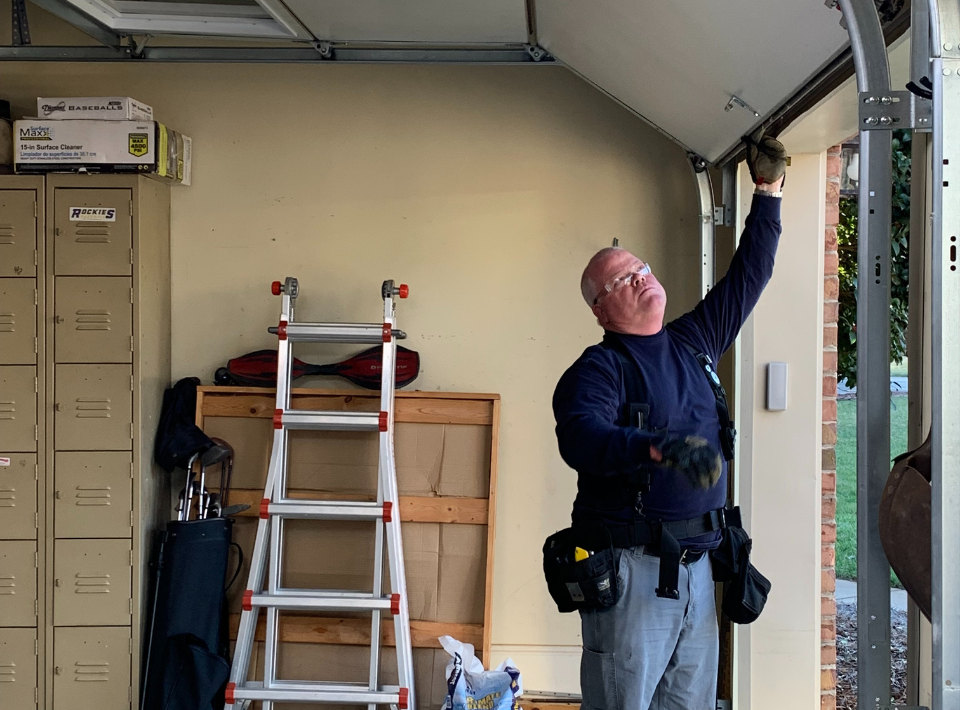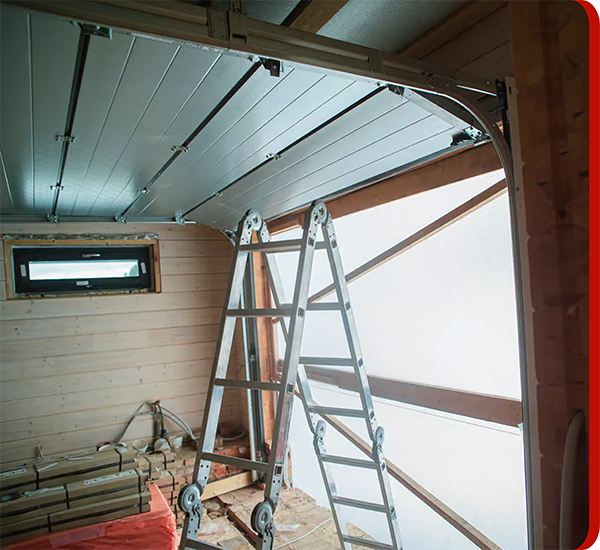Typical Problems and Solutions for Homeowners With Garage Doors
As a homeowner, you might deal with numerous typical garage door problems that can disrupt your daily regimen. Let's explore the most frequent garage door troubles and exactly how you can tackle them successfully.
Malfunctioning Garage Door Openers
When your garage door opener begins acting up, it can be aggravating, specifically if you rely on it daily. You may discover that it does not respond to your remote or the door opens and closes unpredictably. If that's not the trouble, inspect the opener's power source.
If you still experience problems, look for any type of indicators of endure the gears or motor. A malfunctioning opener may require lubrication and even a substitute component. Do not think twice to consult your user guidebook for troubleshooting tips particular to your model, or consider calling an expert if the issue lingers. Taking these steps can help recover your garage door's capability in no time.
Misaligned Garage Door Tracks
If your garage door isn't opening up or closing efficiently, misaligned tracks might be the culprit. Typical causes consist of deterioration or unintentional bumps that disrupt the alignment. Thankfully, dealing with these track problems can restore your door's function and keep it running securely.
Sources Of Misalignment
Misalignment of garage door tracks can take place for a number of factors, commonly leading to frustrating functional problems. If your garage door gets bumped or hit, that effect can misalign the tracks. Recognizing these causes can aid you comprehend why your garage door isn't operating efficiently.
Repairing Track Concerns
Repairing track issues with misaligned garage doors needs a careful approach to guarantee smooth procedure. First, check the tracks for bends or particles that might block activity. Utilize a level to inspect if the tracks are right; if not, delicately touch them back right into placement with a rubber club. Next off, validate the braces holding the tracks are tight; loose screws can cause misalignment. If the tracks are substantially harmed, consider replacing them. Once aligned, oil the tracks with a silicone-based spray to minimize rubbing. Examination the garage door's procedure to validate it opens up and closes smoothly. Regular maintenance will assist protect against future track problems and keep your garage door operating properly.
Broken Springs
When your garage door suddenly refuses to open up or close, it's commonly as a result of busted springs. These springs bear the weight of the door, making it simple for you to raise or reduce it. If they snap, you'll see that your door feels heavy or won't move in any way.
To verify the concern, visually inspect the springs for gaps or breaks. If you think they're broken, don't try to repair them yourself, as they're under high stress and can cause injury. Rather, call a specialist who can safely change the springtimes.
Routine upkeep can help prevent springtime failure, so keep an eye on their problem and lubricate them occasionally. If you're experiencing constant spring problems, take into consideration updating to higher-quality springs that can endure even more deterioration. This positive technique can save you time and cash in the future, ensuring your garage door runs smoothly.
Noisy Garage Doors
After addressing concerns like damaged springs, you might discover another typical problem: loud garage doors. If your garage door squeals, rattles, or moans, it can be quite irritating, specifically if it's disrupting your peace. The sound often originates from worn-out rollers, loose hardware, or lack of lubrication.
Start by examining the rollers and hinges. If they're filthy or harmed, cleaning up or replacing them can considerably reduce sound. Next, check for loosened screws or screws; tightening them can get rid of rattling audios. Don't forget to lube the moving parts with a silicone-based spray or garage door lubricant. This will help minimize friction and noise.
If your door still seems like a dinosaur, consider getting in touch with a specialist. Regular upkeep can stop loud garage doors and extend their lifespan, guaranteeing you delight in a quieter, smoother operation.
Garage Door Remote Issues
Lots of home owners experience frustration with garage door remote concerns at some point. If your visit homepage remote isn't functioning, the initial step is to inspect the batteries. Weak or dead batteries are frequently the perpetrators. Replace them and see if that addresses the trouble. If the remote still won't operate, attempt reprogramming it. Consult your garage door opener manual for specific instructions.
In some cases, disturbance from other electronic devices can impact your remote. Look for any kind of close-by gadgets that may be triggering a signal disruption. If that doesn't help, check the remote for physical damages, like splits or damaged buttons.
An additional typical issue is range; you could simply be as well much from the garage door. They can diagnose and fix any type of underlying problems with your garage door system.
Weather Condition Stripping Issues
If you see drafts, water leaks, or enhanced power costs, your garage door's climate stripping could be worn. Comprehending exactly how to identify indications of wear and understanding installation ideas can assist you maintain an appropriate seal - garage doors nanaimo. When it's time for a replacement, you'll have a lot of alternatives to choose from
Indications of Use
As you use your garage door over time, the weather stripping can begin to show indicators of wear, which is crucial to resolve. If you discover the stripping is weak or tearing away from the door, it's time to take activity. You could also discover that your garage door doesn't seal properly, leading this article to raised energy prices or bug issues.
Setup Tips
When you see endure your garage door's weather condition stripping, addressing the installation can make a considerable difference. Verify you have the ideal kind of weather removing for your garage door. Step the door precisely to cut the stripping to the appropriate size. Clean the surface where you'll use the weather removing, getting rid of any dirt or debris to guarantee a strong bond. Utilize a high-grade glue or adhere to the manufacturer's instructions for setup. Ensure it's straightened effectively to seal spaces effectively. Routinely inspect the setup for any type of indicators of damage or detachment. By taking notice of these details, you'll enhance your garage door's insulation and protect your home from the aspects.
Substitute Options
While you may have installed your garage door's weather removing properly, wear and tear can still lead to issues that necessitate substitute. Action your door's measurements accurately to assure a proper fit, and select self-adhesive strips for very easy installment. Routinely checking and changing climate stripping not just enhances your garage's power efficiency yet likewise secures it from damage.
Sensing Unit Breakdowns

Beginning by checking the sensing unit placement. See to it both sensing units face each various other and are degree. If they're not, change them until they are. Next, tidy the sensor lenses with a soft towel to remove any kind of dirt or debris that might block their sight.
If the sensors appear intact yet the door still won't close, it could be time to change them. With a little troubleshooting, you can generally solve sensor problems and obtain your garage door functioning smoothly once more.
Often Asked Questions
Just how Typically Should I Keep My Garage Door System?
You should preserve your garage door system a minimum of two times a year. Normal checks for wear, lubrication of relocating parts, and readjusting the tracks can keep it functioning smoothly and extend its life-span significantly.
Can I Set Up a Garage Door Myself?
Yes, you can install a garage door yourself, yet it requires careful planning and the right tools. Ensure you adhere to the maker's directions very closely and think about security preventative measures to prevent accidents throughout installment.
What Is the Typical Life-span of a Garage Door?
The average life expectancy of a garage door is commonly 15 to 30 years, depending upon products and upkeep. If you take care of it well, you can optimize its durability and take pleasure in reputable performance.

Just how Do I Select the Right Garage Door?
When you choose the best garage door, think about materials, style, and insulation. Believe regarding your home's style, budget, and upkeep needs. Do not neglect to check local guidelines and energy performance rankings for excellent efficiency.
Exist Energy-Efficient Garage Door Options Available?
Yes, there are energy-efficient garage door alternatives readily available. You can pick shielded doors, which assist maintain your garage's temperature level, or try to find versions with a high R-value to improve energy performance and minimize energy expenses.